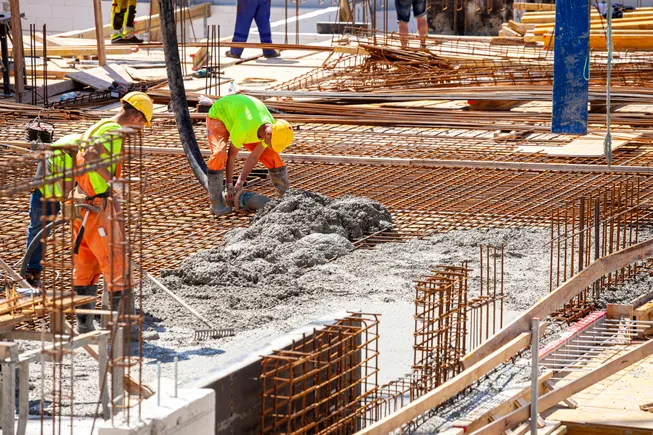"He who has never learned to obey cannot be a good commander."
– Aristotle
THE ART OF LEADERSHIP
Master Obedience, Inspire Greatness
Aristotle’s Timeless Wisdom on How True Leaders Cultivate Humility and Discipline for Lasting Influence and Success
I have long believed leadership is deeply rooted in humility and discipline. Those who aspire to lead effectively must first learn the importance of obedience, an underrated virtue often overshadowed by the glamour of authority. Aristotle reminds us that the strongest commanders have once humbly followed; they understand the value of discipline, respect, and service. Genuine leadership begins not with power but a deep understanding of responsibility, respect for authority, and empathy for those we guide.
Yet, embracing obedience does not imply passive submission; rather, it signifies strength, integrity, and the wisdom to recognize one's role within a broader context. Leaders who have experienced obedience understand the delicate balance between authority and compassion, discipline and encouragement. They comprehend firsthand the significance of clear communication, consistent expectations, and respectful interactions. Having been followers themselves, they become intuitive and compassionate leaders, able to inspire genuine loyalty and collective effort.
Today's leadership landscape demands individuals who grasp this fundamental truth. Leaders who cultivate humility through obedience can genuinely connect with their teams, earning respect not by demands but through mutual trust and understanding. As Aristotle suggests, it is precisely through this journey of disciplined learning and respect that individuals acquire the actual authority necessary to command effectively. Leadership, therefore, is more than issuing orders; it is about modeling discipline, empathy, and respect, creating an environment where everyone feels valued and empowered.
Embrace humility through respectful listening and disciplined action, fostering trust and strengthening your leadership through genuine empathy and integrity.
COMMERCIAL CONSTRUCTION
Construction Boom Fuels Labor Shortage
Pushing U.S. Commercial Builders Toward Innovative Solutions
The rapid surge in U.S. commercial construction, driven by increased investment in warehouses, data centers, and healthcare facilities, has triggered an unprecedented labor shortage. With demand far exceeding the current availability of skilled tradespeople, companies face significant delays and escalating project costs. Contractors nationwide report challenges recruiting electricians, plumbers, and carpenters, highlighting a critical imbalance in the construction workforce that threatens timelines and profits.
Many firms are adopting advanced technologies such as robotics, automated machinery, and artificial intelligence to combat the shortage, enhance productivity, and bridge workforce gaps. Innovations in modular and prefabricated construction methods are also becoming more prevalent, allowing quicker and more efficient building processes. Training programs emphasizing apprenticeships and vocational education have emerged as a key focus area for industry associations and businesses aiming to bolster workforce numbers.
Experts indicate that the labor crunch may persist despite these efforts, requiring systemic changes, including revised immigration policies to attract skilled foreign workers. Moreover, rising wages designed to retain talent are reshaping industry economics. Stakeholders increasingly call for comprehensive policy solutions and collaboration among government, educational institutions, and private industry to meet growing infrastructure needs sustainably.
INFRASTRUCTURE INDUSTRY
Historic $20B Hudson Tunnel Project
Advances, Promising Major Boost to Northeast Rail Infrastructure
After years of delays and uncertainty, the long-awaited Hudson Tunnel Project connecting New York and New Jersey has secured critical federal funding, finally accelerating toward reality. This massive $20 billion infrastructure initiative, crucial to alleviating severe congestion and repairing deteriorating century-old tunnels damaged by Superstorm Sandy, received approval for a significant $6.9 billion federal grant. The funding greenlights preliminary construction, sparking optimism about enhanced regional connectivity and substantial economic growth across the Northeast corridor.
Escalating rail delays and persistent fears of tunnel failure underscore the project's urgency, which could trigger widespread disruption to commuters and regional economies. Once completed, the new twin-tunnel rail connection under the Hudson River is projected to double the rail capacity between New Jersey and New York City, significantly improving reliability for Amtrak and NJ Transit passengers. Officials estimate the construction phase alone could generate more than 72,000 jobs, injecting momentum into local economies and providing a robust boost for regional labor markets.
The Hudson Tunnel Project critically signifies broader momentum in U.S. infrastructure revitalization efforts funded under the Infrastructure Investment and Jobs Act, showcasing how federal, state, and local governments can collaborate effectively on significant initiatives. While engineering and logistical hurdles remain substantial, policymakers and transit agencies hail this moment as a transformative step forward. As preliminary construction ramps this year, regional businesses and commuters eagerly anticipate the project's benefits, viewing it as a crucial lifeline for sustained economic stability and growth.
RESIDENTIAL RESEARCH
Surging Lumber Prices Spark Slowdown
Concerns Amid Rising US Homebuilding Costs and Persistent Supply Shortages
US residential construction faces renewed pressure as lumber prices surge again, reigniting concerns of a potential slowdown in homebuilding activities. Builders nationwide are struggling with escalating material costs, which have spiked sharply due to supply chain disruptions, transportation bottlenecks, and sustained demand from the housing sector. Analysts warn that the persistence of high lumber prices could significantly impact affordability, putting upward pressure on home prices and possibly dampening buyer enthusiasm, particularly among first-time homebuyers already strained by rising mortgage rates.
This recent uptick in lumber prices arrives at a critical juncture when the US housing market faces various challenges. Labor shortages plague construction firms, exacerbating project delays and driving up labor costs. Concurrently, higher interest rates deter potential homebuyers, further complicating the housing industry's ability to sustain growth. Builders have been vocal in their concerns, urging policymakers and industry stakeholders to address these multifaceted issues swiftly.
Industry experts suggest that residential construction activity could slow notably in coming quarters without relief in material pricing and improvements in the supply chain. Some builders are already postponing projects or reducing housing starts in anticipation of sustained price volatility. The situation underscores a need for short-term and longer-term strategies to stabilize supply chains and material costs. These are crucial steps to ensuring housing remains accessible and affordable for Americans amid ongoing economic uncertainty.
TOOLBOX TALK
The Importance of Safe Handling of Heavy Doors and Panels on Construction Sites
Introduction
Good morning, Team! Today's toolbox talk addresses the safe handling of heavy doors and panels. Large or heavy building components can pose serious hazards when improperly moved, installed, or stored.
Why It Matters
If handled incorrectly, heavy doors and panels can easily tip over, pinch fingers, or cause back injuries. Proper lifting and handling techniques reduce injuries and damage to materials.
Strategies for Safe Handling
Plan Ahead:
You can always plan the route and identify hazards before moving heavy items.
Use Proper Lifting Techniques:
Lift with your legs, not your back, and never hesitate to get assistance.
Secure Loads Properly:
Use clamps, slings, or carts specifically designed for moving heavy items.
Wear Appropriate PPE:
Gloves, safety boots, and eye protection can prevent pinch and foot injuries.
Store Carefully:
Store doors and panels flat or securely upright with proper supports to prevent tipping.
Discussion Questions
Have you ever witnessed or experienced injuries from handling doors or panels? What happened?
What additional measures can we implement to handle heavy components safely?
Conclusion
We ensure safety and productivity on-site by using safe lifting practices, securing loads, wearing proper PPE, and carefully storing materials.
Lift smart, move safely!








